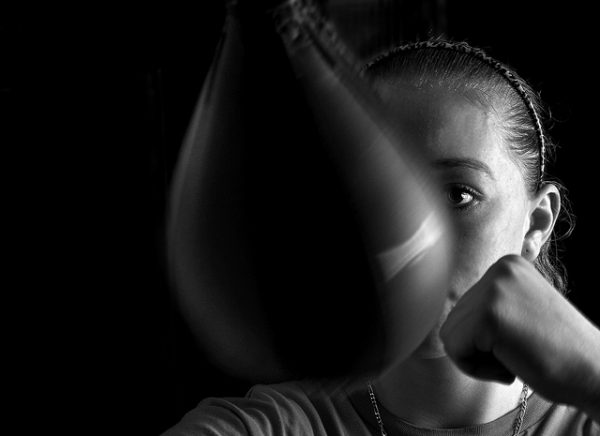
A stage play inspired by early boxing great Barbara Buttrick recently premiered in the United Kingdom. The play, title Mighty Atoms (after one of Buttrick’s nicknames, “The Mighty Atom of the Ring”), marks a departure in the history of women in boxing, away from condemnation towards acceptance, and has important implications for how we think about gender and women in sport.
Women participating in fights goes back to at least the 1700’s, in the form of Elizabeth Wilkinson, the “European Championess,” who competed in bare-knuckle boxing matches in the streets of London. Her combination of showmanship and fighting prowess made her popular in fighting circles. Still, for many, Wilkinson represented an awful kind of brutalism that lessened the value of the United Kingdom. Meanwhile, in the United States, women boxers were seen as a side-show, forced to compete alongside snake charmers and trapeze artists in American carnivals.
- Gerald Gems and Getrud Pfister. 2014. “Women Boxers: Actresses to Athletes – The Role of Vaudeville in Early Women’s Boxing in the USA.” The International Journal of the History of Sport 31(15): 1909-1924.
- Malissa Smith. 2014. A History of Women’s Boxing. Rowman & Littlefield.
- Anne Tjønndal. 2016. “Pugilistic Pioneers: The History of Women’s Boxing in Norway.” Sport History Review 47(1): 3-25.
Sport scholars have shown that these ideas are stereotypes about women in boxing continue today. While often used to marginalize or exclude women from the sport, they can also provide a source of identity and meaning for female fighters.
- Jennifer Hargreaves. 1997. “Women’s Boxing and Related Activities: Introducing Images and Meanings.” Body & Society 3(4): 33-49.
- Travis D. Satterlund. 2012. “Real, but not Too Real: A Hierarchy of Reality for Recreational Middle-Class Boxers.” Sociological Perspectives 55(3): 529-551.
- Christine Mennesson. 2000. “‘Hard’ Women and ’Soft’ Women: The Social Construction of Identities among Female Boxers.” International Review for the Sociology of Sport 35(1): 21-33.
- Carlo Rotella. 1999. “Good with Her Hands: Women, Boxing, and Work.” Critical Inquiry 25(3): 566-598.
- Yvonne Lafferty and Jim McKay. 2004. “‘Suffragettes in Satin Shorts’? Gender and Competitive Boxing.” Qualitative Sociology 27(2): 249-276.
Finally, it is worth noting then even when women’s boxing was finally included in the 2012 Olympic Games in London–the site of this week’s theatrical premier–the addition was met with opposition.
- Anne Tjønndal. 2016. “The Inclusion of Women’s Boxing in the Olympic Games: A Qualitative Content Analysis of Gender and Power in Boxing.” Qualitative Sociology Review 13(3): 84-89.
- Marianna Dortants and Annelies Knoppers. 2013. “Regulation of Diversity through Discipline: Practices of Inclusion and Exclusion in Boxing.” International Review for the Sociology of Sport 48(5): 539-549.
- Katharina Lindner. 2012. “Women’s Boxing at the 2012 Olympics: Gender Trouble?” Feminist Media Studies 12(3): 464-467.

Comments